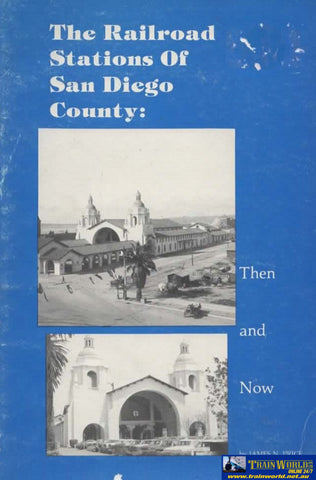The Railroad Stations of San Diego County: Then and Now *Cover Rubbed* (SP-2009)
Product No.: SP-2009
Title: The Railroad Stations of San Diego County: Then and Now
Author(s): Price, James N.
Illustrator(s): N/A
Publisher: Price & Sieber
ISBN: 90962185701
Condition: New (Cover Rubbed)
Binding: Softcover
Dust Jacket: No Jacket
Edition: 1st Edition
Publication Year: 1988
Features: Covers Rubbed. 55 Pages with Black/White Photos.
There's something special about train stations. These buildings somehow transcend the brick, wood, and glass that define their structure. To the communities they serve, train stations represent the railroad, with its attendant nostalgia on the one hand and no-nonsense business on the other.
While many fine stations have met the wrecking ball and bulldozer across the country, we are fortunate in San Diego County and the neighboring border cities of Tijuana and Tecate to have 18 buildings that serve or have served as train stations. A strong sentiment plus action and money have saved a number of these symbolic buildings. Communities have banded together to find funds to buy and physically move three stations from trackside to streetside locations.
And at least a half dozen others have been spared thanks to historical preservation efforts. Only one train station has been razed in San Diego County in the past twenty-five years -- Fallbrook. The stations in San Diego, Del Mar, and Oceanside still bustle with daily Amtrak and freight activity. Many others lead productive second lives -- from offices and museums to restaurants and gift shops.
The buildings range in architecture and size from the elegant mission-style station in downtown San Diego to tiny woodframe edifices, such as La Mesa, that held little more than an agent and serviced only a handful of passengers. But they all represent the railroad in America, and they have each seen countless arrivals and departures of both trains and the people who have ridden them.



